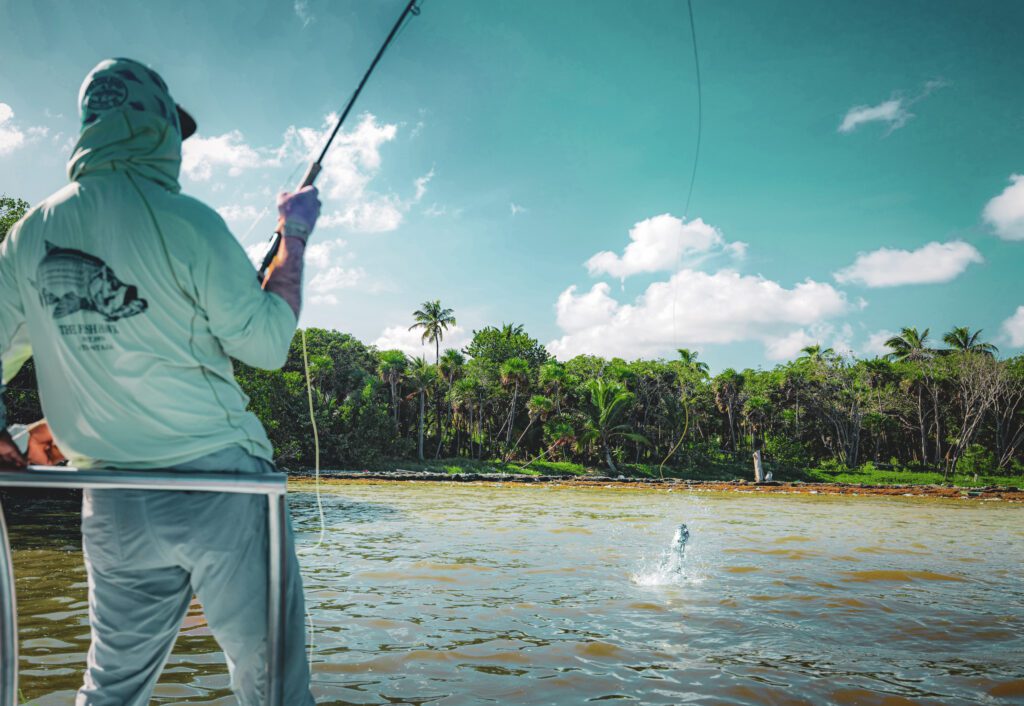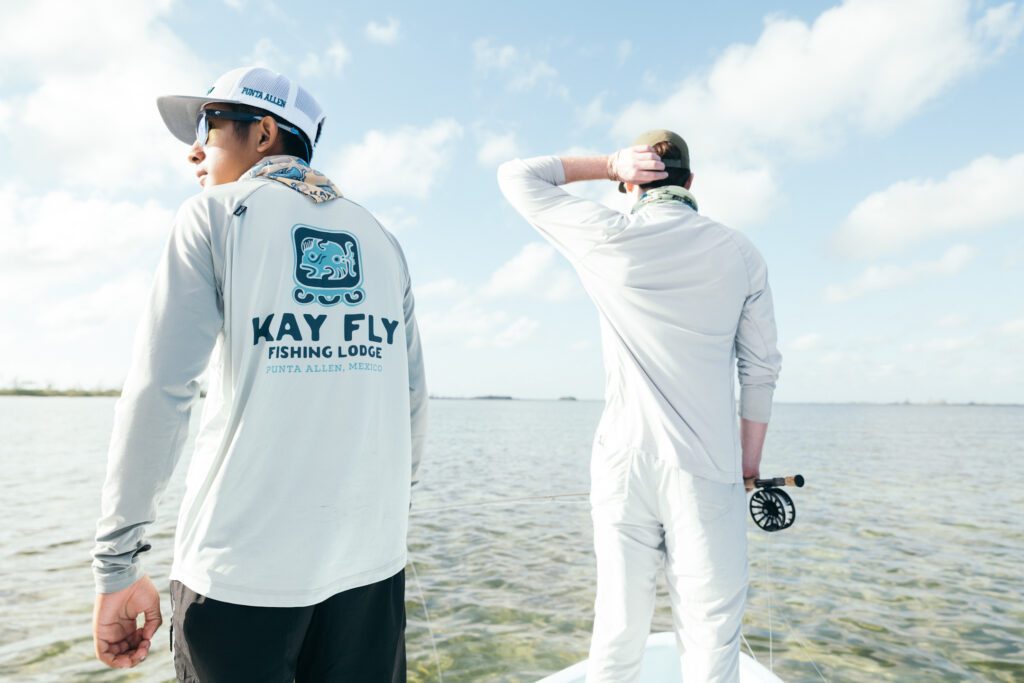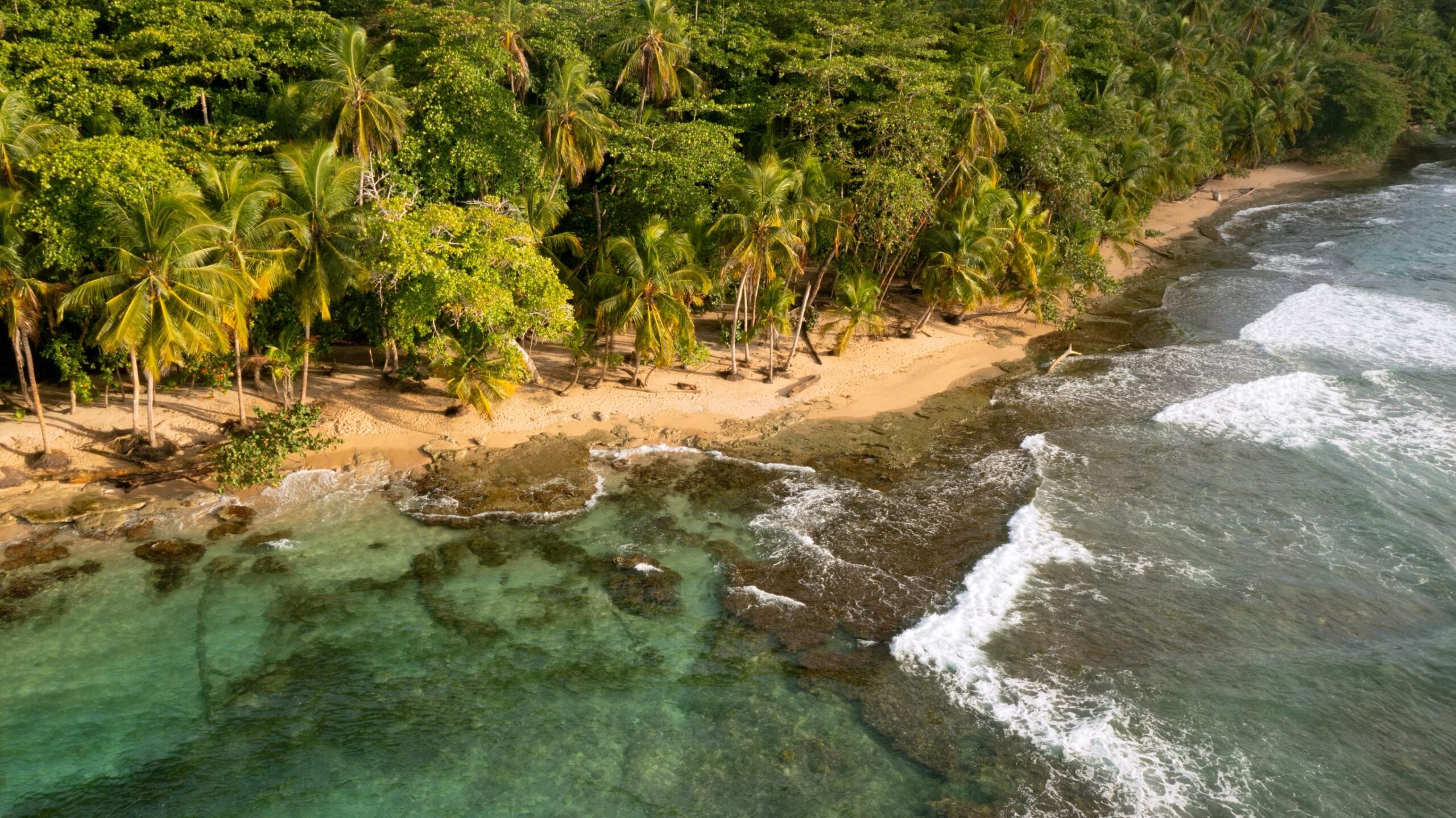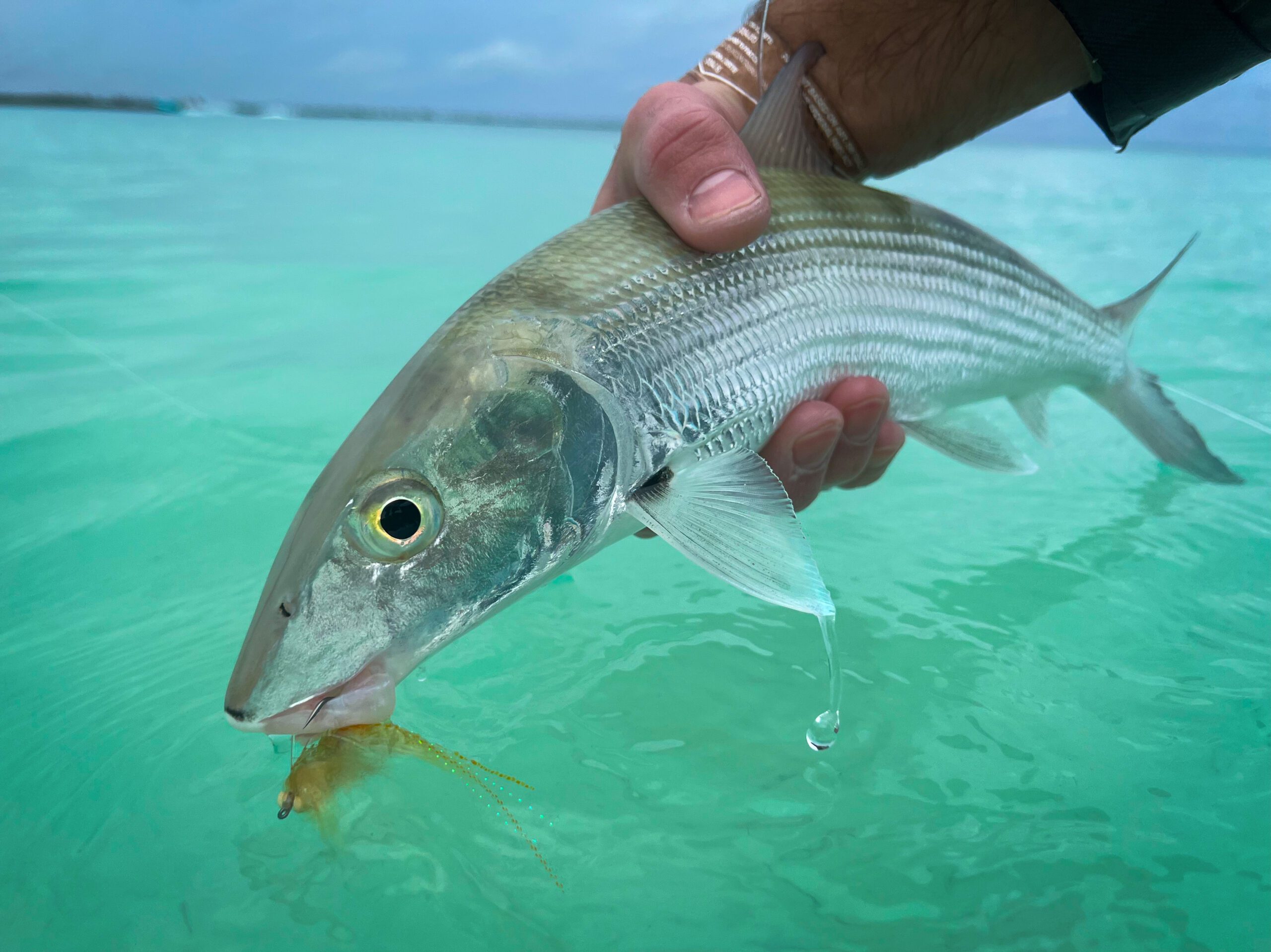Saltwater Fly Fishing Trip Planning: An Angler’s Dream Journey
Embarking on a saltwater fly fishing trip is an exhilarating experience that combines the thrill of the catch with the awe-inspiring beauty of marine environments. Whether you’re a seasoned angler or new to the sport, effective trip planning is crucial for a successful and enjoyable experience. This guide, crafted by the experienced team at Wood Valley Travel, is designed to walk you through the essential steps of planning your saltwater fly fishing adventure. From understanding the basics to selecting the perfect destination, we’ve got you covered.
Understanding the Basics of Saltwater Fly Fishing
The Allure of Saltwater Fly Fishing
Saltwater fly fishing offers a unique challenge and excitement distinct from its freshwater counterpart. It involves larger, often more powerful fish, and demands a different set of skills and equipment. The sheer diversity of fish species available in saltwater environments, from bonefish in shallow flats to tarpon in coastal waters, promises a thrilling experience for any angler.
The appeal of saltwater fly fishing lies not just in the variety of fish but also in the richness of the marine ecosystems. These environments can range from tropical coral reefs to rugged, temperate coastlines, each offering a unique backdrop for the sport. For many, the appeal also lies in the test of skill – saltwater species are known for their strength and agility, providing a formidable challenge even for experienced fly fishers.
Key Differences Between Saltwater and Freshwater Fly Fishing
Understanding the differences between saltwater and freshwater fly fishing is crucial for effective trip planning. Saltwater fly fishing typically requires heavier gear, as the fish are larger and the conditions more demanding. The rods, reels, and lines are specifically designed to handle the corrosive nature of saltwater and the strength of ocean-dwelling fish.
Casting techniques also differ. Saltwater fly fishing often requires longer casts and quicker responses due to the fish’s speed and wariness. Additionally, the saltwater environment itself – with factors like tides, wind, and the vastness of the fishing area – poses unique challenges that require specific strategies and planning.

Choosing Your Ideal Destination
Selecting the right destination is a critical step in planning a successful saltwater fly fishing trip. This choice will dictate not only the species of fish you can expect to encounter but also the overall experience of your adventure. At Wood Valley Travel, we recommend considering a few key factors to help you make the best choice.
Popular Saltwater Fly Fishing Spots Worldwide
The world is home to a myriad of fantastic saltwater fly fishing destinations, each offering unique experiences. From the crystal-clear flats of the Bahamas, renowned for bonefish, to the vibrant coastal waters of Belize, a haven for tarpon, the options are endless. Other top destinations include the rugged coasts of New Zealand, the rich waters of the Florida Keys, and the exotic seascape of the Seychelles. Each location promises a unique set of challenges and rewards, catering to different skill levels and preferences.
Seasonal Considerations in Destination Selection
Timing is everything when it comes to saltwater fly fishing. Different destinations have peak seasons based on fish migrations, weather patterns, and other ecological factors. For instance, if you’re targeting tarpon in the Caribbean, the best time would be from May to July. Understanding these seasonal patterns is crucial for maximizing your chances of a successful trip. Our team at Wood Valley Travel can guide you in aligning your trip with the best season for your chosen destination. Regardless of the season, here are a few of the top destinations around the world:
- Bahamas – The Bonefish Paradise
- The Bahamas is a world-renowned destination for saltwater fly fishing, especially for bonefish. The shallow flats of the Bahamas offer crystal clear waters, making it an ideal spot for sight fishing. The islands are home to numerous lodges and guides specializing in fly fishing, ensuring a top-notch experience.
- Belize – Tarpon and Permit Haven
- Belize boasts a diverse marine ecosystem, making it a prime location for targeting tarpon, permit, and bonefish. The Belize Barrier Reef, the second largest in the world, provides an incredible backdrop for anglers. The region’s year-round warm weather and experienced local guides make it a must-visit destination.
- Florida Keys, USA – The Sportfishing Capital
- Known as the ‘Sportfishing Capital of the World,’ the Florida Keys offer a rich fishing experience with a variety of species like tarpon, permit, and bonefish. The unique geographical layout of the Keys creates a perfect habitat for saltwater fly fishing, complemented by expert guides and world-class accommodations.
- Seychelles – Exotic and Remote
- The Seychelles, an archipelago in the Indian Ocean, is an exotic destination that offers a unique fly fishing experience. Its remote and pristine flats are home to a variety of species, including the coveted Giant Trevally. The untouched beauty and isolation of these islands provide a once-in-a-lifetime fishing adventure.
- New Zealand – A Diverse Coastal Experience
- While New Zealand is often celebrated for its freshwater trout fishing, its saltwater fly fishing opportunities are equally impressive. The country’s expansive coastlines offer opportunities to target species like kahawai, yellowtail kingfish, and snapper. New Zealand’s diverse marine environments ensure a varied and exciting saltwater fly fishing experience.
Each of these destinations offers unique opportunities and challenges for saltwater fly fishing enthusiasts. Whether you’re a seasoned angler or just starting out, these locations promise unforgettable experiences. At Wood Valley Travel, we specialize in crafting tailored fishing trips to these world-class destinations, ensuring an exceptional adventure tailored to your preferences.
Essential Gear for Your Saltwater Adventure
Equipping yourself with the right gear is another vital aspect of saltwater fly fishing trip planning. Saltwater environments demand durable and specialized equipment to handle the challenging conditions and robust fish species.
Must-Have Equipment for Saltwater Fly Fishing
Your gear list should include a high-quality saltwater fly rod and reel, equipped with a strong line capable of withstanding the corrosive nature of saltwater and the power of saltwater fish. Additionally, a selection of saltwater flies, leaders, and tippets tailored to your target species is essential. Don’t forget practical accessories like polarized sunglasses for visibility, a sturdy wading belt for safety, and a waterproof bag to protect your gear.
Choosing the Right Fly Fishing Apparel for Saltwater Conditions
Appropriate apparel is as important as your fishing gear. This includes lightweight, breathable clothing for sun protection, a reliable hat, and a quality pair of wading boots. Given the varying conditions of saltwater environments, preparing for both wet and dry scenarios is prudent. Remember, comfort and protection from the elements are key to ensuring you can focus on the joy of fishing.
Mastering Saltwater Fly Fishing Techniques
Achieving success in saltwater fly fishing is not just about the destination or the gear; it’s also about mastering the right techniques. These techniques can vary significantly from those used in freshwater environments, demanding a combination of skill, patience, and adaptability from anglers.
Advanced Casting Techniques for Saltwater Conditions
Saltwater fly fishing often requires casting longer distances with precision and power. Perfecting a double haul cast is essential for achieving the necessary speed and distance. This technique involves a coordinated effort of both hands, providing additional acceleration to the line during the cast. It’s also crucial to practice casting in various wind conditions, as coastal areas can be windy. Wood Valley Travel’s expert guides can offer personalized coaching to help you refine these casting techniques, ensuring you’re well-equipped to handle the challenges of saltwater environments.
Understanding Saltwater Fish Behavior and Habitats
Each saltwater species has unique behaviors and preferred habitats. For instance, bonefish are known for their wariness and require a stealthy approach, while tarpon are more aggressive and respond well to larger flies. Learning about the feeding patterns, tide influences, and habitat preferences of your target species is key to a successful trip. Our team at Wood Valley Travel leverages local knowledge and experience to provide insights into the specific behaviors of different saltwater fish, enhancing your chances of a successful catch.
The Role of Guides in Enhancing Your Experience
While DIY trips can be rewarding, the assistance of a professional guide can significantly enhance your saltwater fly fishing experience, especially in unfamiliar waters.
Benefits of Choosing a Hosted Saltwater Fly Fishing Trip
Hosted trips offer numerous advantages, including access to local knowledge and expertise. Guides not only know the best fishing spots but also understand the daily patterns of the fish, the impact of weather conditions, and the most effective flies and techniques. They provide invaluable on-the-water coaching, helping you hone your skills and increase your catch rate. Additionally, hosted trips often include logistical support, such as transportation and accommodation arrangements, allowing you to focus entirely on the fishing experience.
What to Look for in a Saltwater Fly Fishing Guide
Selecting the right guide is crucial for a fulfilling fly fishing trip. A good guide should have extensive local knowledge, excellent teaching skills, and the ability to adapt to different skill levels. They should prioritize safety and be well-versed in conservation practices. At Wood Valley Travel, we meticulously select our guides based on their expertise, experience, and client feedback, ensuring a high-quality experience for our clients.

Planning and Logistics for Your Trip
An integral part of any successful saltwater fly fishing trip is meticulous planning and handling of logistics. This ensures a smooth, stress-free experience, allowing you to focus on the joy of fishing.
Travel Arrangements and Accommodations
When planning your trip, consider the travel arrangements and accommodations that will best suit your itinerary. Factors like proximity to fishing locations, types of accommodation (such as lodges or resorts), and the availability of fishing guides are crucial. At Wood Valley Travel, we help our clients navigate these choices, ensuring that logistics align seamlessly with their fishing goals. We can also advise on the best modes of transport, whether it’s by air to remote islands or local travel within a fishing region.
Budgeting and Cost Considerations
Budgeting effectively for your trip is essential. Costs can vary based on destination, duration, type of accommodation, and additional services like guided tours or boat rentals. We recommend planning with a budget in mind and considering all potential expenses, including gear, licenses, and travel insurance. Wood Valley Travel offers tailored trip planning to fit a range of budgets, ensuring you get the best value for your investment.
Conservation and Responsible Angling
As enthusiasts of the great outdoors, we at Wood Valley Travel are committed to promoting conservation and responsible angling practices in all our trips.
Sustainable Practices in Saltwater Fly Fishing
Sustainable fishing practices are vital for preserving marine ecosystems. This includes adhering to catch-and-release policies, using environmentally friendly gear, and respecting local wildlife and habitats. Our guides are well-versed in sustainable practices and educate anglers on the best ways to enjoy the sport while minimizing environmental impact.
H3: Supporting Local Conservation Efforts
Participating in conservation efforts can enhance your fly fishing experience. This can involve engaging with local conservation projects, supporting marine protected areas, or contributing to community initiatives. By choosing destinations and operators that prioritize conservation, anglers can play a part in preserving the natural beauty and biodiversity of the world’s saltwater environments.
Preparing for the Unexpected: Safety and Health Tips
Venturing into the ocean’s vast and unpredictable environments requires preparation and awareness for potential safety and health concerns.
Navigating Weather Conditions and Tides
Understanding and respecting the power of nature is key in saltwater fly fishing. Keep a close eye on weather forecasts and tidal patterns, as these can significantly impact fishing conditions. Wood Valley Travel ensures that all trips are planned with safety in mind, providing real-time updates and contingency plans for adverse weather conditions.
Health and Safety Precautions in Saltwater Environments
Prioritize your health and safety by preparing for sun exposure, staying hydrated, and being aware of marine hazards such as strong currents or wildlife. It’s also important to have a first-aid kit and be aware of the nearest medical facilities, especially in remote fishing locations.
Documenting Your Adventure: Photography and Journaling
Capturing the moments of your saltwater fly fishing trip not only preserves memories but also allows you to share your experiences with others. In today’s digital age, documenting your adventure has become an integral part of the travel experience.
Capturing the Essence of Your Saltwater Fly Fishing Trip
Photography plays a significant role in documenting the stunning environments and the thrill of the catch. Investing in a good waterproof camera or a protective case for your smartphone is advisable. Action cameras are also a great option for capturing dynamic fishing action. Remember, the best photos often come from paying attention to lighting, especially during early morning or late afternoon. At Wood Valley Travel, we encourage anglers to capture the beauty of the destinations and the essence of their fishing experience.
Keeping a Fly Fishing Travel Journal
Alongside photography, keeping a travel journal is a wonderful way to record your experiences. Documenting the day’s catch, weather conditions, techniques used, and personal reflections adds depth to your memories. This journal can serve as a valuable resource for future trips or simply as a personal memoir of your fishing journey.

Conclusion: Setting Off on Your Saltwater Fly Fishing Adventure
As we conclude this guide to saltwater fly fishing trip planning, remember that the journey is as important as the destination. Whether you’re chasing the elusive bonefish in tropical flats or battling the mighty tarpon in coastal waters, each trip offers a unique adventure and an opportunity to connect with nature.
At Wood Valley Travel, we are committed to providing our clients with exceptional experiences, tailored to their specific needs and preferences. From choosing the perfect destination to ensuring that every detail of the trip is meticulously planned, our team is dedicated to ensuring your saltwater fly fishing adventure is unforgettable.
Recap of Key Points:
- Understand the basics and advanced techniques of saltwater fly fishing.
- Choose the right destination considering the season and species.
- Equip yourself with the appropriate gear and attire.
- Embrace the expertise of professional guides for a fulfilling experience.
- Plan meticulously for a smooth and enjoyable trip.
- Engage in sustainable practices and document your adventure.
Ready to embark on your saltwater fly fishing adventure? Contact Wood Valley Travel today to start planning your dream trip. Our team of experts is ready to customize an itinerary that aligns with your fishing aspirations and ensures an unparalleled experience in the world’s most amazing saltwater fly fishing destinations. If you’re more into DIY trips and fishing, we have a post on that here. Lastly, here is a saltwater fly fishing trip checklist courtesy of our team!
- Destination Research and Selection
- Research top saltwater fly fishing locations.
- Consider seasonal patterns and species availability.
- Check for travel advisories and local regulations.
- Travel Arrangements
- Book flights and local transportation.
- Arrange accommodations close to fishing sites.
- Confirm passport, visa, and entry requirements for international travel.
- Guide and Hosted Trip Booking
- Choose a reputable guide or hosted trip service.
- Confirm availability and book in advance.
- Discuss your skill level and target species with the guide.
- Fishing Gear and Equipment
- Saltwater-grade fly rod and reel.
- A variety of saltwater flies, leaders, and tippets.
- Waterproof bag and corrosion-resistant tackle.
- Apparel and Personal Gear
- Breathable, UV-protective clothing.
- Durable, comfortable wading boots.
- Polarized sunglasses and wide-brimmed hat.
- Safety and Health Preparations
- Pack a comprehensive first-aid kit.
- Include sun protection: sunscreen, lip balm, and after-sun care.
- Bring seasickness medication if prone to motion sickness.
- Documentation
- Ensure all fishing licenses and permits are in order.
- Make copies of important documents (passport, ID, insurance).
- Inform family or friends about your travel itinerary.
- Local Knowledge and Conservation
- Familiarize yourself with local fishing regulations and practices.
- Learn about conservation efforts in the destination.
- Plan to participate in catch-and-release and other sustainable practices.
- Photography and Journaling Supplies
- Waterproof camera or protective case for photography.
- Journal or logbook for recording catches and experiences.
- Extra batteries or charging devices.
- Miscellaneous Essentials
- Pack insect repellent and a hat with a net in bug-prone areas.
- Bring a reliable flashlight or headlamp.
- Include a waterproof phone case and portable charger.


